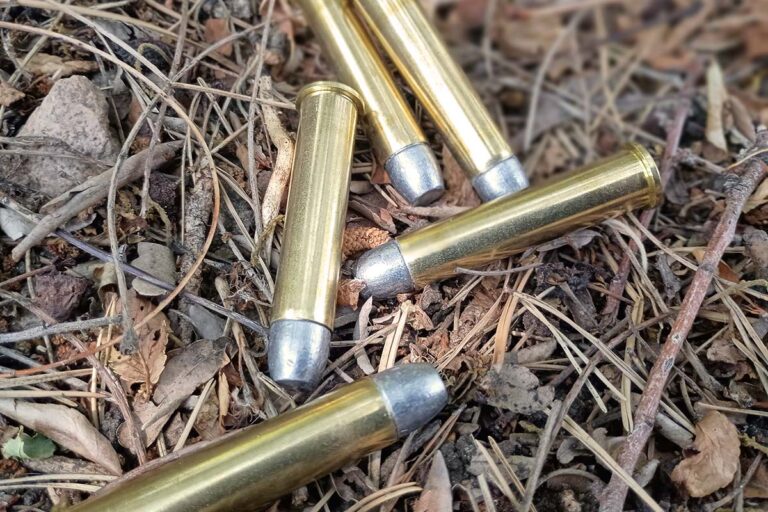
Looking to load up on .45-70 ammo? Here we take a closer look at the cartridge and discuss the top loads for hunting and the range.
The beauty of .45-70 Gov’t is its versatility, as it allows shooters to find a load tailored to a specific need among a variety of different uses. It can’t do everything, but it can do a lot, so we’re going to discuss how to go about selecting the best load for your use case and firearm.
A Brief History Of .45-70 Gov’t
The .45-70 cartridge, aka .45-70 Government, was developed for the U.S. military and was the primary service cartridge of the U.S. Army from 1873 to 1892 when it was replaced by the Krag-Jorgensen rifle and the .30-40 Krag cartridge.
The U.S. military adopted the Springfield Model 1865 as its first general-issue breech-loading cartridge rifle, but it was quickly replaced by the Model 1866. The biggest change with the updated rifle was its cartridge, as it substituted a rimfire design for a centerfire one. The standard load was a .50 caliber, 450-grain bullet on 70 grains of black powder, aka .50-70-450.
While serviceable, trajectory was problematically steep, and with average velocities of only around 1,100 fps it was feeble at longer ranges and limited its usefulness in the field. A revised gun and new load were developed around a .45 caliber bullet to improve trajectory and ballistic performance, which became .45-70 Government.
The new load was a .45 caliber, 405-grain bullet on the same 70 grains of black powder. This satisfied the basic requirements and entered service in 1873 with the 1873 Springfield rifle and cavalry carbine.

In 1879, the Sandy Hook Proving Ground tests evaluated different loadings for an improved version before settling on a 500-grain bullet. The .45-70-500 proved effective on man-sized targets to 1,000 yards and capable of penetrating through 3 inches of oak planks plus 8 inches of sand at 3,500 yards with a mortar-like trajectory. Keep in mind that volley fire was still an important infantry tactic of the day.
The 405-grain load was replaced with the 500-grain load that year and it became standard-issue until the government adopted the Krag-Jorgensen rifle with its .30-40 Krag cartridge in 1893.
The .45-70 On The Civilian Market
Surplus Springfield rifles were extremely popular on the civilian market, but commercial breechloader and lever-action rifles were available as well.
Some breech-loading rifles in .45-70 included the Remington Rolling Block, the Winchester 1885 and the 1874 Sharps rifle. The Sharps rifle was particularly lauded for build quality and accuracy, especially at long ranges, and was immortalized in the film Quigley Down Under.
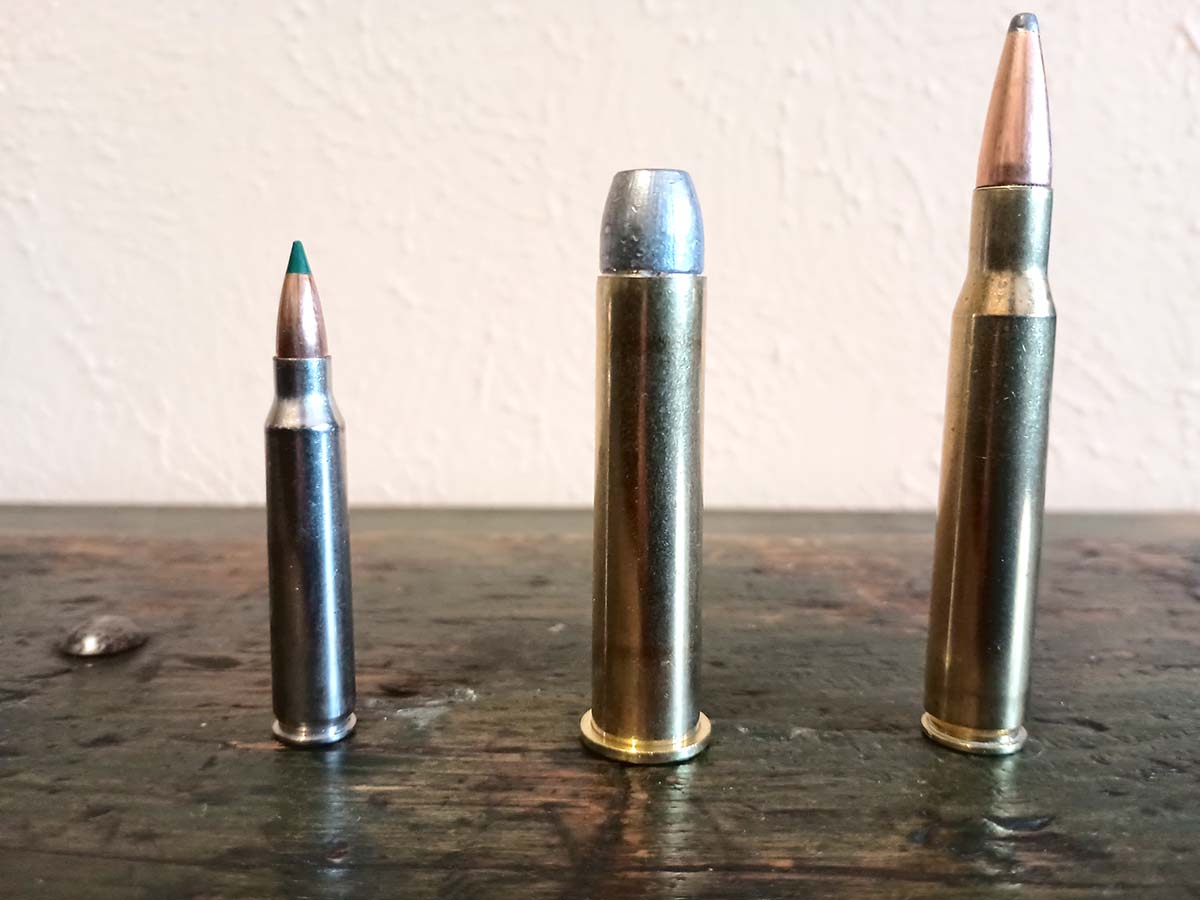

Lever-action rifles in .45-70 were of course developed as well, such as the Marlin 1881, the John Browning-designed Winchester Model 1886 and the Marlin Model 1894, the last of which remained in production for more than a century except for a brief interregnum.
No commercial bolt actions were made for .45-70, but it was popular to convert Siamese Mausers to accept the cartridge.
.45-70 was a favorite of big game hunters, especially buffalo hunters on the plains, and was found potent enough for any North American game.
While certainly overpowered for medium game, the .45-70 had a reputation for destroying relatively little meat, with the typical refrain being to “eat around the hole.”
There was some use in African hunting as well, though it was much more sporadic compared to the big-bore Express magnums. Some modern loadings have some cache as a dangerous game cartridge, though usage is not universal as .45-70 doesn’t quite meet energy requirements in most safari jurisdictions.
With an adjustable tang-mounted aperture sight, such as the Vernier sight and others, the long-range potential of the cartridge could be maximized. Not only did that make .45-70 a fantastic choice for hunters but also for long-range shooting in its day. However, long-range .45-70 shooters then (and now) had to become experts at calculating trajectory and judging wind to be successful. Flat shooting is not an adjective that applies to this round.
.45-70 Ballistics
Today’s .45-70 shooter has many more options than just the 405- or 500-grain lead loads of yesteryear. While it remains an expert’s cartridge for long-range shooting, some loadings can stretch the practical range a bit further than you’d expect.
The recoil depends heavily on what load of .45-70 ammo you’re using, as black powder loads are just under 20 foot-pounds while modern loadings can exceed 30 foot-pounds.
The original load was relatively tame, with its 405-grain bullet on 70 grains of black powder typically producing velocities of around 1,300 to 1,350 fps. However, today’s most common loads feature a 300-grain jacketed flat-nose projectile loaded to 1,850 to 2,000 fps or a 405-grain jacketed flat-nose projectile loaded to 1,600 to 1,800 fps.
Today there are several black powder, black powder substitute and low-recoil/low-pressure loads that replicate the original 45-70 ballistics very well. To give you an idea of what that looked like, here’s a 500-yard trajectory table for HSM’s Cowboy Action 405-grain hardcast load (estimated G1 BC of 0.21). All tables shown were made using Shooter’s Calculator and presume a 100-yard zero, a 1.5-inch sight height, no corrections for atmosphere and a 10 mph 90-degree crosswind:
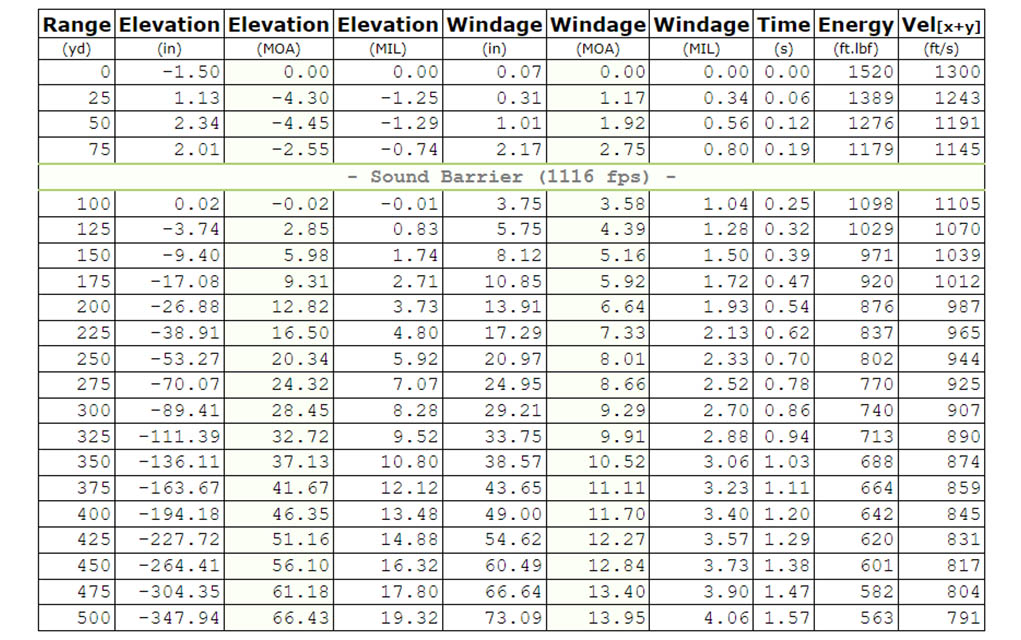

While the bullet goes subsonic just before 100 yards, it holds velocity fairly steadily after that, staying above 700 fps to just past 700 yards. It also drops like a rock, falling more than 26 inches at 200 yards and nearly 350 inches at 500 yards.
However, modern loads of .45-70 ammo can change the equation a bit.
This is what the modern 405-grain ammunition can do, using the ballistic info for Remington’s 405-grain Core-Lokt load (G1 BC of 0.281):


Modern projectiles more than double the supersonic travel with only a modest increase in velocity. The Core-Lokt load drops 100 fewer inches at 500 yards than the original, and it has more energy at 1,000 yards than a 9mm has at the muzzle. This would mean it’s effective on any North American game to at least 300 yards if not farther.
Tipped bullets will flatten the trajectory somewhat, such as Hornady’s 300- and 325-grain LEVERevolution 45-70 ammo. Here’s a 1,000-yard table for the 325-grain load (G1 BC of 0.23) using the same parameters:
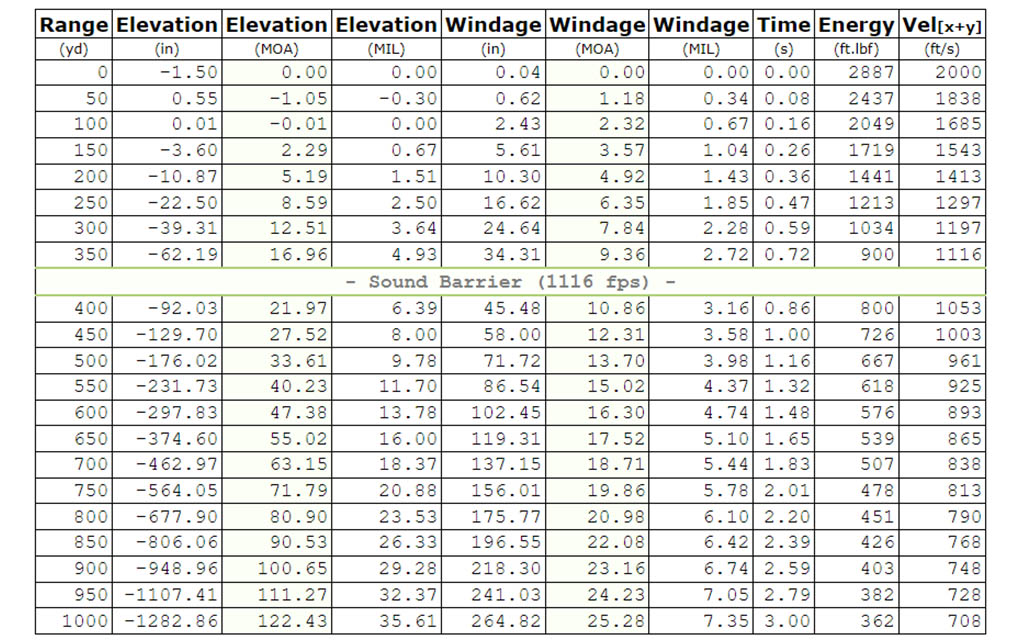

While it remains supersonic just beyond 350 yards, it has roughly half the drop at 500 yards compared to the original 405-grain load and loses less velocity from 500 to 1,000 yards than it does in the first 100 yards!
Overpressure loads for dangerous game hunting, which should only be used in select rifles designed that can tolerate them, add a bit more thump for close encounters. This is a 1,000-yard table for Buffalo Bore’s 430-grain hardcast flat-nose load (G1 BC of .23):
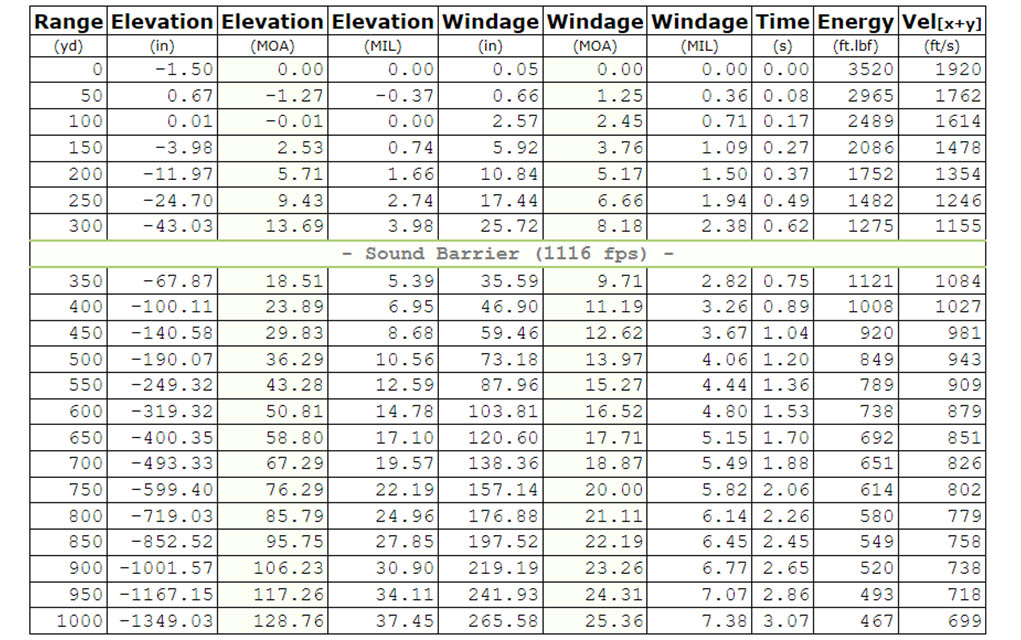

It isn’t quite there, but it’s close to safari rifle power. It packs a tremendous wallop inside 100 yards but begins to lose velocity like any other .45-70 load beyond that. After 300 yards, it’s just like any other 400+ grain load in this caliber.
Best Applications For .45-70
The best use case for .45-70 for most people will be hunting in areas where shot opportunities are within 200 yards and you don’t want to worry about bullet deflection. It cuts through brush easily, one of the cartridge’s long-standing best qualities.
In other words, it’s best for hunting in timber or anywhere you won’t be shooting beyond a couple of hundred yards.
The .45-70 is not too powerful for deer, but load selection should be considered. A light-for-caliber, fast-expanding bullet (such as a 300-grain soft point or low-recoil load) will hit hard without destroying too much meat.
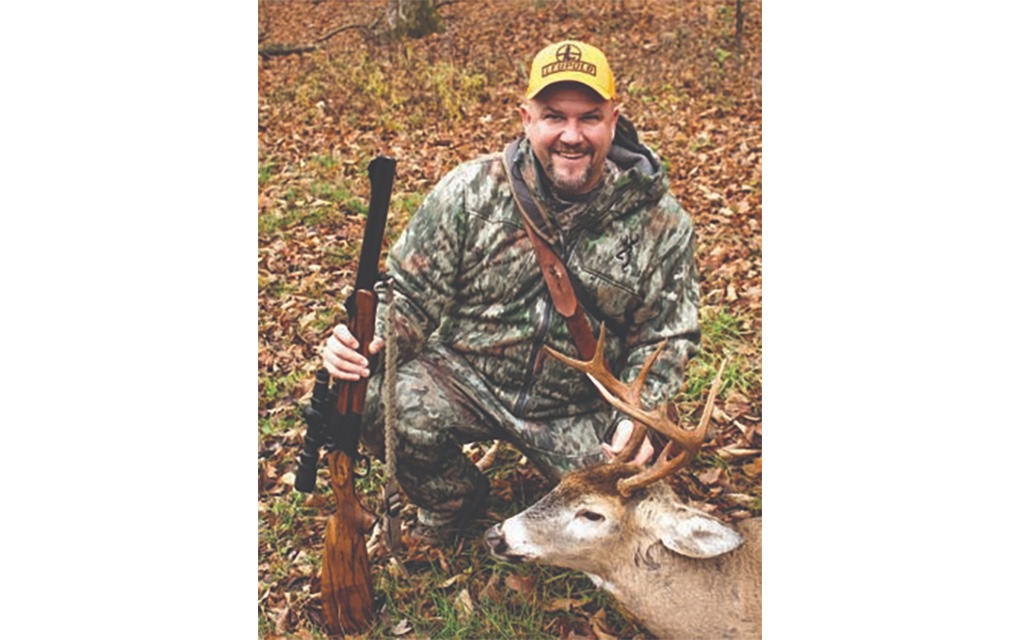

It’s also a profoundly effective killer of elk, moose, caribou and anything else of that size anywhere on the planet, including some African game with good marksmanship.
The .45-70 is also one of the known reliable stoppers of grizzly bears. Overpressure loads aren’t necessarily critical, but a tough, heavy bullet (preferably non-expanding) placed correctly by the shooter is.
While people have gone on safari with .45-70, choice of jurisdiction will be limited. Most countries that have dangerous game and allow dangerous game hunting also have an energy floor that overpressure .45-70 does not meet. If you’re going to go to the trouble and expense of hunting in Africa, you might as well not limit yourself and get a true, dedicated dangerous game rifle.
So, with that all said, what’s the best .45-70 ammo? Here are our top picks for a variety of use cases and budgets.
The Best .45-70 Ammo
| Load | Bullet Weight | Bullet Type | Muzzle Velocity | Muzzle Energy | Cost |
| Hornady LEVERevolution 325-Grain FTX | 325gr | FTX Flex Tip | 2,000 fps | 2,886 ft-lbs | $40-45 per box of 20 |
| Underwood Ammunition +P 430-Grain Hard Cast Flat Nose | 430gr | Coated Lead Long Flat Nose Gas Check | 1,925 fps | 3,539 ft-lbs | $58-65 per box of 20 |
| HSM Cowboy Action Ammunition 405-Grain Hardcast Flat Nose | 405gr | Cast lead flat-nose | 1,300 fps | 1,520 ft-lbs | $40-45 per box of 20 |
| Remington Core-Lokt Reduced Pressure 405-Grain Jacketed Soft Point | 405gr | Jacketed flat-nose soft point | 1,600 fps | 2,302 ft-lbs | $50-60 per box of 20 |
| Buffalo Bore Dangerous Game 380-Grain Mono-Metal | 380gr | Lehigh Match flat-nose mono-metal | 2,075 fps | 3,632 ft-lbs | $95-105 per box of 20 |
Hornady LEVERevolution 325-Grain FTX


Specs
Bullet Weight: 325 grains
Bullet Type: FTX Flex Tip
Muzzle Velocity: 2,000 fps
Muzzle Energy: 2,886 ft-lbs
Cost: $40-45 per box of 20
Pros
- Best load for stretching the .45-70’s legs
- Expanding tip makes it great for most North American hunting
Cons
- Expanding tip does not make it ideal for dangerous game purposes
If you have a scope on your lever gun, the Hornady LEVERevolution 325-grain FTX load improves long-range trajectory, making it relatively practical with the right scope and reticle. It’s designed for reliable expansion, so it’s not the best grizzly load, but it’s dynamite for hunting otherwise and is relatively affordable.
Underwood Ammunition +P 430-Grain Hard Cast Flat Nose


Specs
Bullet Weight: 430 grains
Bullet Type: Coated Lead Long Flat Nose Gas Check
Muzzle Velocity: 1,925 fps
Muzzle Energy: 3,539 ft-lbs
Cost: $58-65 per box of 20
Pros
- Coating prevents lead fouling
- Powerful hardcast bullet makes it great for dangerous game defense
Cons
- Can only be used in certain firearms that will handle the pressure
This load features a gas-checked flat-nose hardcast lead bullet that travels at almost 2,000 fps, perfect for putting a big hole in something. This is only intended for use in modern firearms such as Marlin lever actions and Ruger Model 1s, but it would be perfect for a grizzly load.
HSM Cowboy Action Ammunition 405-Grain Hardcast Flat Nose


Specs
Bullet Weight: 405 grains
Bullet Type: Cast lead flat-nose
Muzzle Velocity: 1,300 fps
Muzzle Energy: 1,520 ft-lbs
Cost: $40-45 per box of 20
Pros
- Can be used in any .45-70 firearm
- Perfect for plinking at the range or cowboy action shooting
Cons
- Not ideal for hunting
- Uncoated lead projectile will cause fouling
A replica of the original 405-grain black powder load, it sports a triple-grooved lubed hardcast bullet loaded to a moderate velocity. Great for cowboy action and silhouette shooters, and usable in all .45-70 firearms including Trapdoor Springfield rifles.
Remington Core-Lokt Reduced Pressure 405-Grain Jacketed Soft Point
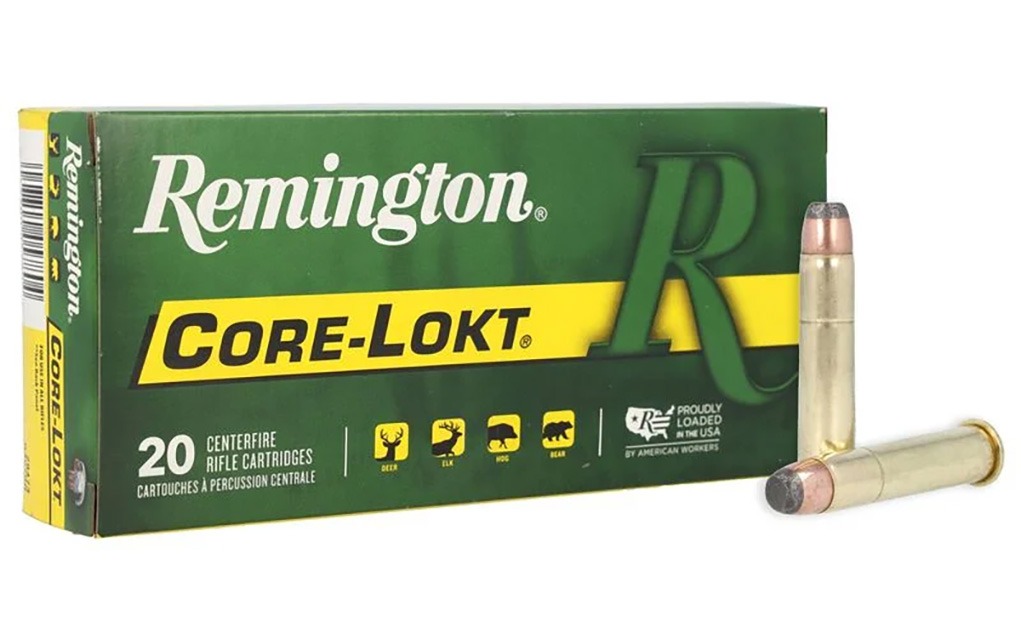

Specs
Bullet Weight: 405 grains
Bullet Type: Jacketed flat-nose soft point
Muzzle Velocity: 1,600 fps
Muzzle Energy: 2,302 ft-lbs
Cost: $50-60 per box of 20
Pros
- Perfect power for North American hunting
- The lower recoil makes it more pleasant to shoot
Cons
- Expanding bullet means not ideal for dangerous game purposes
A lower-pressure, lower-recoil classic JSP hunting load. It features a controlled expansion bullet that will put deer, elk, black bear or anything else of that size in the freezer without beating up your shoulder too much.
Buffalo Bore Dangerous Game 380-Grain Mono-Metal


Specs
Bullet Weight: 380 grains
Bullet Type: Lehigh Match flat-nose mono-metal
Muzzle Velocity: 2,075 fps
Muzzle Energy: 3,632 ft-lbs
Cost: $95-105 per box of 20
Pros
- Very powerful dangerous game load
Cons
- Can only be used in certain firearms that will handle the pressure
- Very expensive
As far as dangerous game loads of .45-70 ammo go, this is a great option. It features a mono-metal projectile designed to be nearly barrier-blind, retaining its shape when hitting dense bone. However, it’s only designed for use in modern rifles.
More Big-Bore Stuff:
Read the full article here











